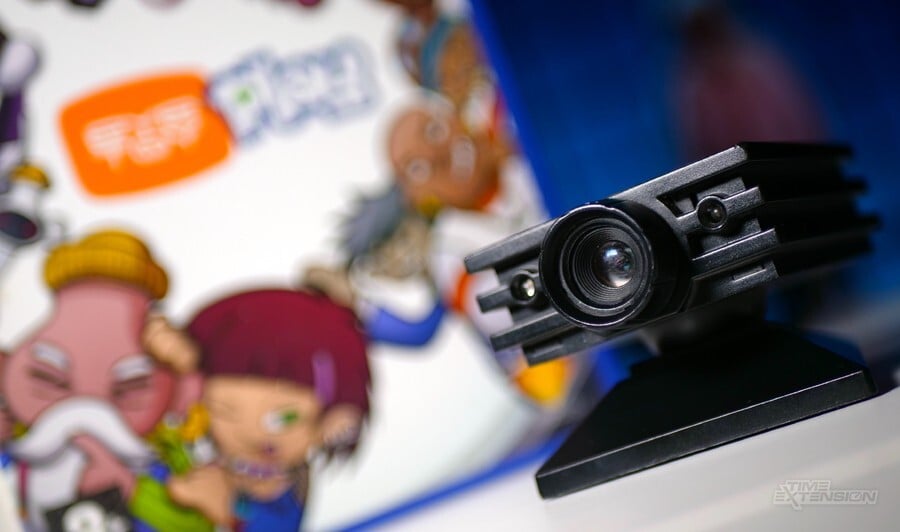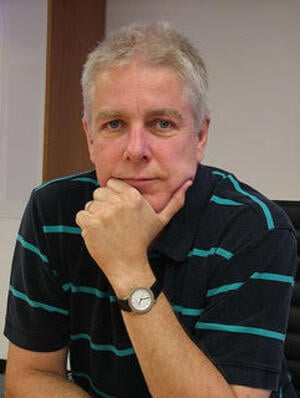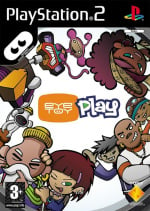
Mixed reality has seen renewed interest once again thanks to Apple, Meta and many others betting big on the VR space. However, this wouldn't be the first time the technology has proven itself to be commercially successful; Sony knows that all too well, having ushered in mixed reality to millions of players twenty years ago in the form of the EyeToy camera for PS2.
Twenty-five games that required the EyeToy to be played were developed for the PlayStation 2, with EyeToy: Play leading the launch in 2003. Originally conceived by Richard Marks in 1999, the webcam peripheral came at an interesting time. It was taken on board by Psygnosis's Camden studio just before it was merged with Team Soho to create the newly formed PlayStation London Studio. Phil Harrison, who then headed up research and development as vice president at Sony, enlisted former Criterion Software head of production Jamie MacDonald to amalgamate the two studios along with work on the first EyeToy software.

"When I came on board as the founding director of the London studio, they were initially working on the idea of using the EyeToy for a Harry Potter game," MacDonald tells Time Extension. "It was about using motion tracking, so using a wizard's wand as part of your agenda – rather than using the controller – you'd use your arm to control going into the game and stuff like that." At the time, EA owned the exclusive license to make Harry Potter games – although the team at PlayStation discovered that this deal did not cover all elements.
"We set out to create this interactive toy where you could hold a real-life wand and be transported to Hogwarts, and you could practice casting spells," former EyeToy producer Ron Festejo tells us. "The proof-of-concept was shown to various execs at WB. There was a lot of back and forth over a long time, but nothing really materialised." Whether it was the arrival of EA's own EyeToy-ready Harry Potter And The Prisoner Of Azkaban (the first non-Sony title to make use of the accessory) or how tiring "holding your arm up for a long time" is, Harry Potter simply wasn't happening.
From this, the team began hosting brainstorming sessions to figure out what to do instead. Unlike The Getaway's estimated staff of fifty – the last game Team Soho developed, which was overseen by MacDonald for the last year of its development – eight people were assigned to work on the EyeToy software, before then ramping up to ten as the project grew. Very quickly, a suite of party games was devised, with three small prototypes put together to test the concept.
"I remember the very first one we came up with was the 'Wishi Washi' window cleaning game with the George Formby music track to it; everybody thought it was just a blast," MacDonald says. This initial concept summed up EyeToy:Play's casual appeal perfectly – but, at the time, it was seen as a "radical departure" for PlayStation, as it mostly focused on games for a hardcore audience. This was the directive from Phil Harrison as he aimed to expand the appeal "beyond the boy in the bedroom" – Sony's core audience, in other words.

Aimed at families from nine to ninety, a 'how to video' that appeared in EyeToy: Play notably featured a grannie demonstrating the movements. It was this same line of thinking to obtain a casual audience that led London Studio to find success in SingStar, another game that utilised the EyeToy. Twelve mini-games were conceived, everything from spinning plates to Kung Foo to keepie-uppies with a football. Naturally, as the only studio developing for the peripheral, pressure was mounting to make something that would stick.
"There were certain challenges because you were not just developing a game, you were also developing the hardware," MacDonald recounts. "It was us who did the industrial design for the EyeToy camera. It was us who found the manufacturers in China. We were told to go through Sony Computer Entertainment Japan to design and build the camera, but it came back at such a ridiculous price that we said: 'Thanks, but no thanks'. All we had was a bit of software, which worked with a regular Logitech webcam. So we designed, developed, manufactured and imported all the cameras. That was an additional challenge. We'd never done that before."
MacDonald underlines the fact that there was a lot of potential danger riding on this project. "The risk as much as anything was reputational, and the investment in the hardware because I think we ordered 500,000 cameras the first time around… If it succeeded. I would get the plaudits. If it failed, I would get the sack."
Ahead of the launch, a demo was taken to E3 2003 in Los Angeles with a build of three mini-games to gauge early perception. While the announcement of Half-Life 2 rocked the gaming world in one part of the conference and the Nokia N-Gage crashed spectacularly at another, a private showing for EyeToy: Play yielded an unexpected fan.
"Ken Kutaragi, who was known as the 'Father of PlayStation' – a bit like a god in the PlayStation world – I remember he came around and specifically had a look at the EyeToy: Play demo," says MacDonald. "And he liked it! We were incredibly excited." With a seal of approval from Kutaragi-san, it was back to the UK to finish up development.
Sony Europe, Sony America and Sony Japan all had a level of autonomy during this period. So when one sector released a game, the other two would decide if they wanted it or not. This occasionally brought conflict, marketing being a common example. EyeToy: Play was always seen as a collection of party games that you get a camera with at London Studio. The US, however, saw it as a peripheral camera that happened to come with some software.
"We were exasperated, to be honest," says MacDonald. "We thought the US colleagues just didn't get it or didn't understand what this was about." A lot of this stemmed from the notion that the US audience was seen to be the most hardcore, and not the kind of audience that would seek out an experience for the whole family to enjoy in the living room. It was a complication that would rise up again and again for the EyeToy.
Europe first had to deal with a marketing issue of its own that it had never encountered before: just how well could a game like this realistically sell? Remember, this is years before the Nintendo Wii came along and turned everyone into gamers; it really was unknown territory. Sony's internal marketing department was known for being "incredibly accurate" regarding how many units could be sold per title. There was talk of anywhere between 100,000 units to half a million for EyeToy: Play. In reality, nobody had a clue.
"When it came out and went to number one in the first week, I remember a senior designer from Criterion Games rang me up and was fulsome in praise. Adam Billyard, one of the founding directors of Criterion, did the same," MacDonald says. "It was like number one for eight weeks in Europe, which was something. Later on, we won two BAFTAs for it – and we were gobsmacked."
Ratchet & Clank. Metal Gear Solid 3: Snake Eater. Madden NFL 2003. EyeToy: Play outperformed all these esteemed titles with four million units sold, making it the 18th best-selling PS2 game of all time and the number one party game for the system.
MacDonald recalls one of the biggest compliments he received was from a marketing director at Nintendo Europe telling him how the company was "absolutely gutted" when EyeToy: Play hit store shelves. With Nintendo struggling to shift GameCubes, Xbox and Steam just getting started, Sega having discontinued the Dreamcast and mobile games being nowhere near the same magnitude as today, everything seemed to fall into place.
This wouldn't be the end of motion in video games, however. Three years later, the aforementioned Wii debuted, utilising motion capabilities which would (briefly) revolutionise the world of video gaming, going on to become a juggernaut at over 100 million sales. So, looking back now, does MacDonald think EyeToy: Play had any influence on the console's success?
"Well, only in the sense that the Nintendo Wii was a copy," he laughs. "We did an EyeToy sports game, and [Nintendo did] Wii Sports. There's no two ways about it: it was a copy – which is fine. Imitation is the highest form of flattery, but yeah, it absolutely had [influence]." This doesn't bother the former Sony man, seeing it as confirmation of the game's success.
That success never hit the same levels come the sequels. Sony has never publicly released the sales numbers for EyeToy: Play 2 and EyeToy: Play 3, but around two million and one million, respectively, seems close to the truth, according to MacDonald – mostly made up of sales across Europe (approximately 70%). A natural decline followed, accelerated by the arrival of the PS3.
Another reason was the US not picking up the third entry, due to the marketing team again not believing it could find a place among the hardcore audience. Japan did the same. While that reasoning was never clear, a Japanese colleague relayed that the limiting factor might have been the small size of people's homes in the country, especially in metropolitan areas.
Alongside these sequels, ten more games with the EyeToy name in the title followed in the years to come, but none reached anywhere near the four-million milestone achieved by the original. "Back then, it was the Holy Grail in game development to create a number one best-selling game, but the real holy grail was to create a whole new genre," concludes MacDonald. "I think that's what we did with EyeToy: Play."

